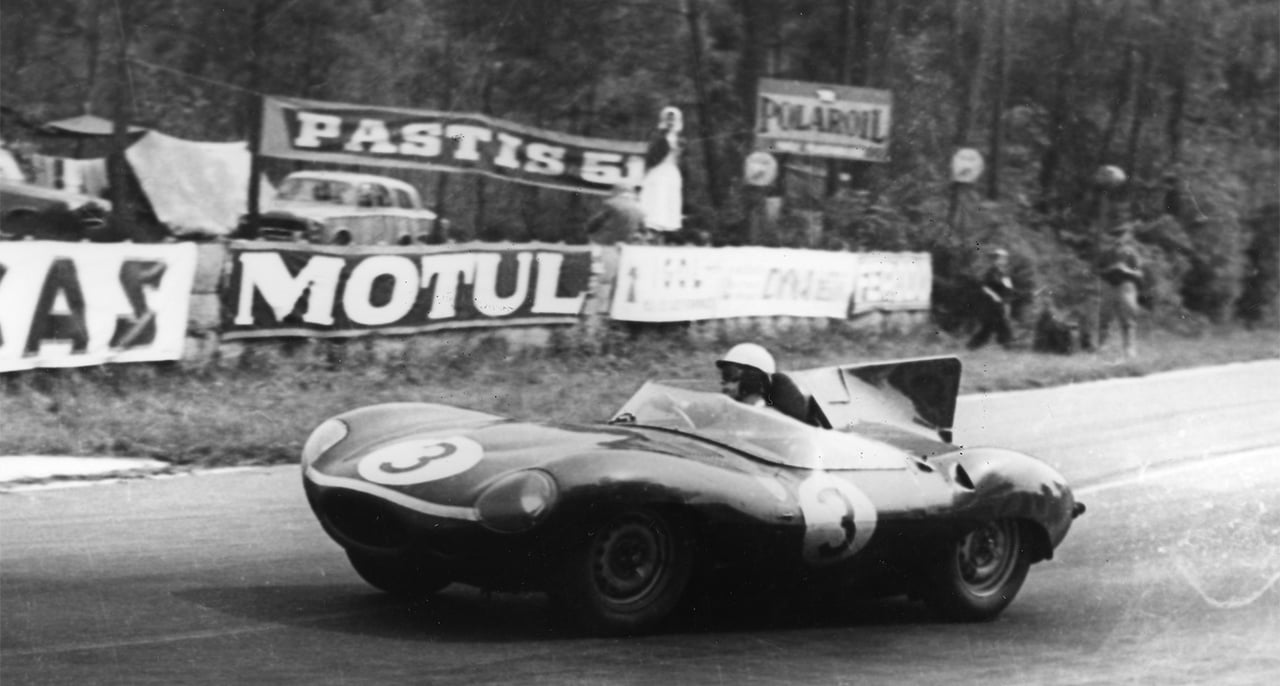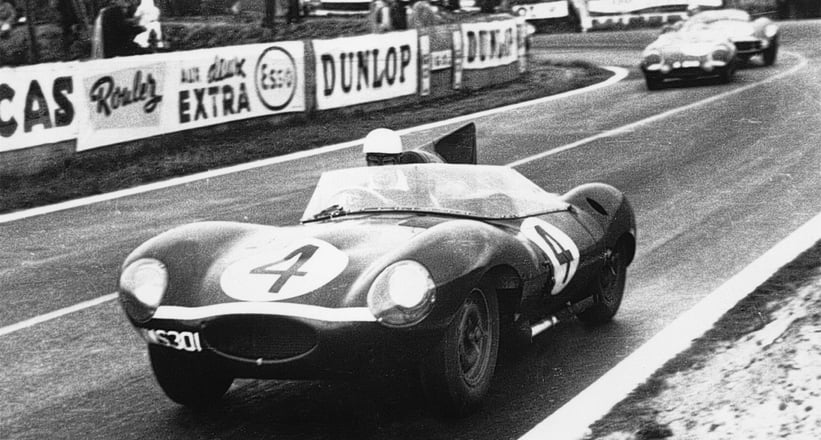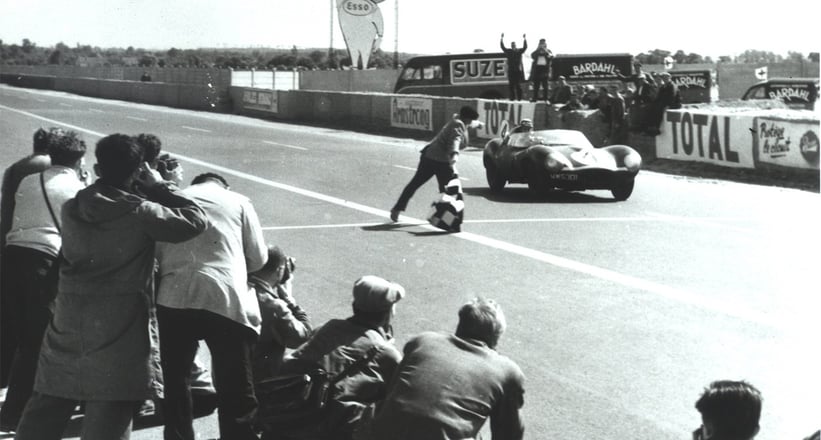When Jaguar launched the D-type in 1954, the aeronautical principles incorporated into its DNA made it the most technologically advanced racing car of its time. Young engineer Malcolm Sayer had gained plenty of useful aerodynamic knowledge during his previous stint with the Bristol Aeroplane Company, as well as bringing with him such revolutionary ideas as the monocoque chassis and deformable fuel bags that could adapt to the car’s soap-bar silhouette. But the D-type was by no means perfect – at least, not at the outset.
The aerodynamic potential of the D-type was evident within a few minutes of its debut at the 1954 Le Mans 24 Hours, reaching 173mph on the sans-chicane Mulsanne straight. Much was learned during the race, and in the months that followed. For 1955, the nose was lengthened by more than seven inches to reduce drag, while the windscreen wrapped further around the driver. But perhaps Sayer’s most important move was to extend the hump behind the driver into a permanent, prominent tailfin (a makeshift fin had been riveted onto the 1954 cars shortly before the race). “We found there was a bit of instability at around 180-185mph, so we put the fin on,” explains Norman Dewis, Jaguar’s lead test driver at the time. “We tried various sizes with different heights and how far back they went before we came up with the final shape.”
Tell-tail



Its impact was felt immediately, the increased stability it provided (drivers claimed they could take their hands off the wheel at 175mph plus) undoubtedly contributing towards the Le Mans victories that were to follow. Today, it also has a secondary purpose, as Dewis explains: “The fin was offset three degrees from the car’s centre line to counteract the clean airflow over the left side of the body. This is the one detail that even the best replica builders often miss!”
Photos: Jaguar






